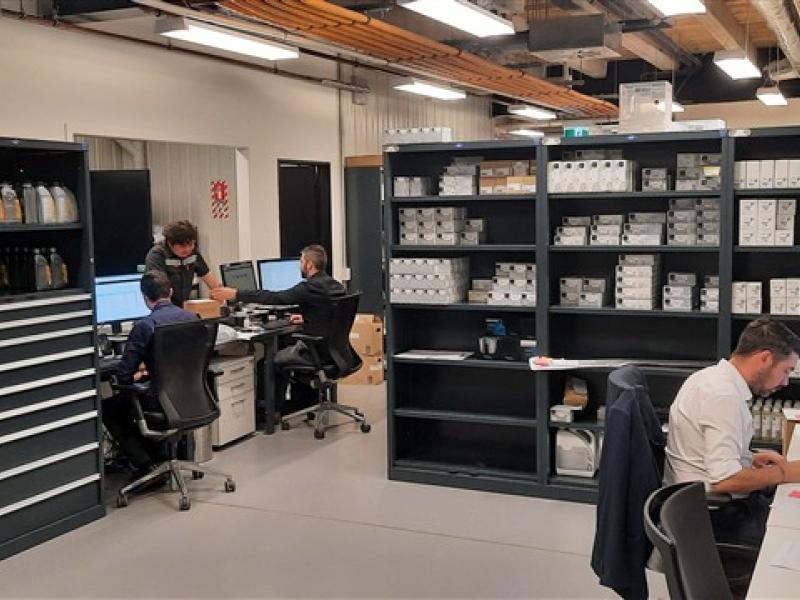SME growth strategist, Phil Wicks, explains why October’s 50 basis points OCR cut provides much-needed certainty, enabling business owners to make strategic decisions and prepare for future growth.
The official cash rate (OCR) cut by the Reserve Bank, which saw a reduction of 50 basis points, reinforces a growing sense of cautious optimism among small business owners across New Zealand. After a challenging 18 months filled with economic uncertainty and rising costs, this solid rate cut will be a welcome step toward stability and growth for many in the SME sector.
I work closely with between 150 and 200 businesses, and have observed a shift in sentiment as we approach the end of the year. Certainty is what business owners have been craving, and this rate cut signals the kind of stability that allows them to plan with greater confidence.
Positive signs in recent months
Over the past few months, it’s become clear that business owners are starting to feel more optimistic. In the conversations I’ve had with several business owners across different industries in the last couple of days – including a commercial joinery company, an engineering firm, and a plumbing business – there’s been a noticeable increase in activity. These businesses are reporting a rise in sales, new project confirmations, and an overall uptick in customer demand.
In fact, some are now shifting their focus to managing this rising demand, particularly with the Christmas season approaching. Staffing and resource management are becoming key concerns as they prepare for a busier period, reflecting renewed confidence in their ability to meet market demand.
However, it’s important to note that this increased activity isn’t uniform across all sectors. Some businesses, particularly those in industries reliant on discretionary spending, are still facing challenges. The lag between businesses that sell essential goods and services versus those that sell more non-essential items is still evident, but this gap is expected to narrow as consumer confidence grows and more money circulates through the economy.
The OCR cut is a step in the right direction, providing much-needed certainty for small business owners who have been operating in a highly unpredictable environment for over a year. The ability to plan with some degree of confidence is critical for business owners, allowing them to make strategic decisions regarding staffing, resource allocation, and investment in growth.
In my role as a Director of BSP Advisory and the Founder of Small Business New Zealand (SBNZ), I have seen firsthand how businesses respond positively when they have the clarity to make informed decisions. Over the past year, the lack of stability in the market has forced many to delay critical decisions, but this OCR cut signals the start of a more predictable business environment. It also indicates the government’s commitment to fiscal responsibility, which gives further confidence to business owners.
Managing demand and growth
While there are still challenges ahead, the general mood is one of cautious optimism. The increase in activity we’re seeing is steady, not dramatic, but it’s giving business owners the opportunity to start thinking beyond survival and toward strategic growth.
For many businesses, this means looking at hiring new staff, expanding their customer base, and improving operational efficiency. The confidence that comes with knowing interest rates are more predictable allows them to shift their focus from short-term survival tactics to longer-term planning. As one business owner told me recently, “We’re finally able to think about the future instead of just trying to make it through the month.”
It’s worth noting that while many businesses are starting to experience the benefits of increased activity, some sectors are still lagging. Businesses that rely on discretionary spending, such as hospitality and retail, are still facing challenges. However, as consumer confidence builds and people have more disposable income, we expect demand to flow through to these sectors, closing the gap between those selling essential services and those offering more lifestyle-oriented products.
The overall sense, however, is that activity is increasing at a steady pace, and more importantly, there is confidence. Certainty is the bedrock upon which businesses can start to plan, hire, and invest, and that’s exactly what we are beginning to see.
Looking ahead
As we move toward the end of 2024 and into 2025, the key takeaway from the business community is that while the recovery is not uniform, it is happening. The OCR cut, along with the government’s transparent economic targets, provides a more stable foundation for business owners to make strategic decisions. For the businesses I advise, many of which span a wide range of industries, the general consensus is that this is a positive turning point.
In summary, the overall mood among the SMEs I work with can be described as cautiously optimistic. Business owners are beginning to feel more secure in their ability to plan for the future, manage growing demand, and invest in the resources needed to scale their operations. As we look ahead, this renewed sense of confidence is likely to continue building, setting the stage for a more prosperous start to the new year.
By Philip Wicks.
Courtesy NZBusiness






